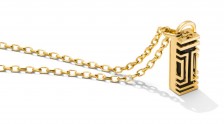Article: Why girly designs directed at women often backfire
By Erica Eden for Co.Design.
Women don’t always take kindly to being isolated by gender or being told that they’re “different.” There needs to be a rock-solid rationale for separate, visible design solutions.
To connect with women, companies often create separate “women only” products. This can have limited success, because women don’t always take kindly to being isolated by gender or being told that they’re “different.” There needs to be a rock-solid rationale for separate, “Visible design” solutions. Visible design makes sense when physical differences exist, suggesting that men and women have incompatible needs. For example, as a woman, I don’t have a beard, so a trimmer shouldn’t be designed for me. Visible design also makes sense in social situations where we desire to be different or attractive in a uniquely feminine or masculine way, like in fashion and grooming.
The distinctions between these concepts aren’t always black and white. It is easy to get lost in the gray area. For example, a product that is obviously designed for women shouldn’t always reflect a stereotypically feminine ideal. To better see why, let’s take a look at a woman’s roles in the course of just one day. She feels differently about her femininity whether she’s getting ready for a dinner party, at kickboxing class, or paying the household bills. While everyone has different moods and modes in their lives, a woman’s range is by and large more expansive. In one day, she might go from wearing hiking boots to high heels, from breastfeeding to home improvement. Things go wrong when we presume that all women want to express their femaleness at all times of their lives. How many products have you seen that are designed for women in an overly stereotypical way? We’ve seen plenty — from women’s skis sporting floral patterns and names like Vamp to computers that flaunt calorie counters, recipe finders, and pastel paint jobs.

By understanding her gender mindset, in the moment she’s using a product, it may be the best choice to create a gender neutral or even masculine design. When we were designing a women’s timepiece for Nike, that’s exactly how things turned out. It is a fashion product worn inside and outside of the gym by the target user — young, urban women — justifying our visible approach. The standard saccharine, pink, cheap ladies’ watches don’t match their personal style, are über-girly, and worse, puerile. These women want a watch that expresses femininity in a bold way, integrating the machined look typical of quality men’s timepieces with a fresh and feminine aesthetic. We were able to strike the right balance between performance and fashion. You’d never call this watch “girly.” I’d love to hear your thoughts on products that misinterpreted femininity.
Originally posted on Fast Company.





